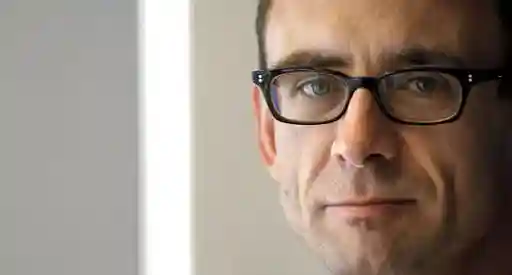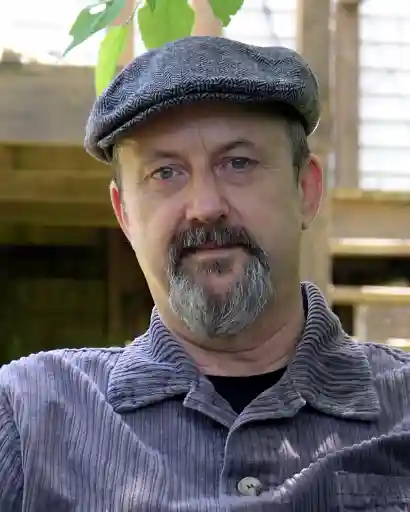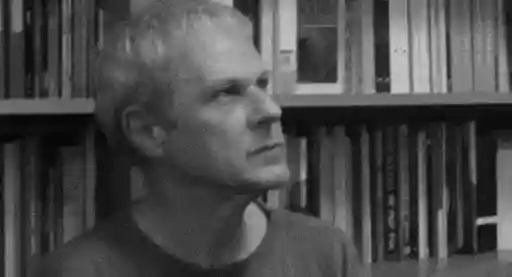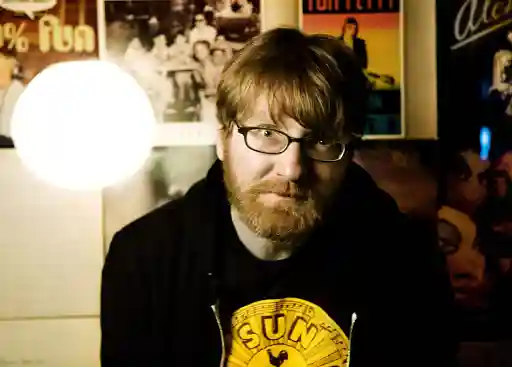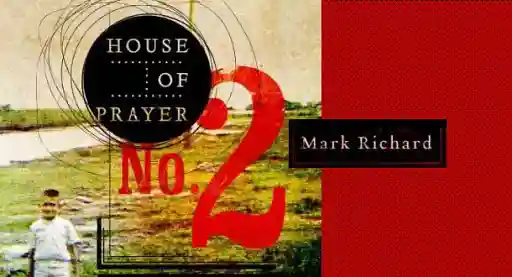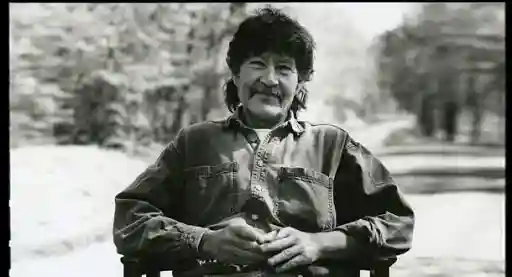Lee Murray is arguably Aotearoa’s most successful contemporary horror writer. Alan Baxter, award-winning author of The Gulp and Sallow Bend, goes so far as to claim she is “synonymous with Kiwi horror.” LitReactor’s Lindy Ryan caught up with the five-time Bram Stoker Awards®-winner for a conversation about horror and dark fiction from the other land down under, with insights into Lee’s newest anthology Remains to be Told: Dark Tales from Aotearoa (Clan Destine Press), a volume which features some of Lee’s favourite Kiwi and Kiwi-at-heart voices.
Congratulations on Remains to be Told: Dark Tales of Aotearoa. What can we expect from this anthology? What is the unique essence of Kiwi horror?
Thank you, Lindy! Readers of Remains to be Told should expect to be transported on an exotic holiday, to a land of soaring mountains, lonely coasts, dense forests, and boiling geysers, with stories set on remote farms, in parochial small towns, and too-bright out-of-the way carnivals. Christa Carmen, author of contemporary gothic novel The Daughters of Block Island says, “Remains to be Told seems to have been excavated from the very soil and riverbeds of New Zealand’s unpredictable landscape.” But those dipping into these pages shouldn’t expect a smooth trip, because unease and the uncanny are the norm in the land of the long white cloud, as contributor Kathryn Burnett, author of short story “Hook” warns: “the friendly inhabitants and natural beauty belie the terrible things that happen here.”
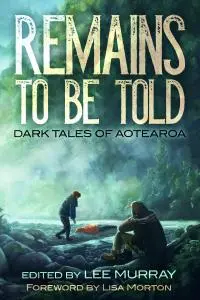 Part of unease stems from our isolation, a feeling which is a staple of our Kiwi horror. Remains to be Told contributor Debbie Cowens, co-author of Kiwi classic Mansfield with Monsters, explains: “I think the core of a lot of kiwi gothic horror is the sense of isolation. New Zealand is a remote country from much of the rest of the world and even within it, you don’t have to travel far from any city or town to find yourself alone in nature.” And it isn’t just the rugged landscape which is unique to our Kiwi stories: our flora and fauna (both imagined and real) are sinister and unforgiving. Cowens’ story in the anthology “The Reaper Beetle”, perhaps based on our near-extinct Mokohinau stag beetle, examines the consequences that befall those who delve too deeply into the study of dark, ancient mythos. It’s a nod to Lovecraft’s “Winged Death” and an excellent example of the strangeness of our fauna.
Part of unease stems from our isolation, a feeling which is a staple of our Kiwi horror. Remains to be Told contributor Debbie Cowens, co-author of Kiwi classic Mansfield with Monsters, explains: “I think the core of a lot of kiwi gothic horror is the sense of isolation. New Zealand is a remote country from much of the rest of the world and even within it, you don’t have to travel far from any city or town to find yourself alone in nature.” And it isn’t just the rugged landscape which is unique to our Kiwi stories: our flora and fauna (both imagined and real) are sinister and unforgiving. Cowens’ story in the anthology “The Reaper Beetle”, perhaps based on our near-extinct Mokohinau stag beetle, examines the consequences that befall those who delve too deeply into the study of dark, ancient mythos. It’s a nod to Lovecraft’s “Winged Death” and an excellent example of the strangeness of our fauna.
Uncanny things abound in Aotearoa. The Māori term for these phenomena is tipua, meaning strange, supernatural, abnormal, and terrifying things. And the term is most often attached to otherwise ordinary elements of our natural world—such as rocks and logs and rivers—which have become imbued with strange, sometimes demonic, powers. Lieutenant-Colonel Gudgeon, described the concept in a 1906 issue of The Journal of the Polynesian Society:
“All that is out of the common or that would seem to possess unaccountable powers or virtues may justly be dubbed a tipua; and under this heading may be included stones, trees, or even fish—provided always that the appearance of the thing in question is sufficiently curious.”
Folklore and myth also play a role as Bram Stoker Award-nominee, Marty Young, whose story “Redwoods on Te Mata Peak” appears in the anthology, says “There are Māori legends everywhere you look; our land is steeped in them. The North Island itself (Te Ika a Māui – Māui’s fish) was hauled up out of the water by Māui on a magical fishhook made from an ancestor’s jawbone, while the South Island (Te Waka a Māui) was the waka or canoe that Māui and his brothers fished from.
Pasifkafuturism’s founding author, Gina Cole, notes the inevitable impact of colonialism on our Aotearoa horror narratives: “The history of Aotearoa as a colony of Britain is steeped in acts of massacre and atrocities by white colonial settlers against Māori (indigenous peoples of Aotearoa),” she writes. “That horrific legacy remains embedded in the fabric of the settler colonial society that we now live in and our relationships with the environment and with each other.” I think Jacqui Greaves’ story, “Fires of Fate,” reveals some of this tension, the author pitting colonial practices and against the landscape in a uniquely Kiwi retelling of the Circe mythos.
Del Gibson, author of haunted house story “Buried Secrets” says “Our kiwi humour is what sets us apart from other countries.” There are wonderful examples of this [in film] with Sir Peter Jackson’s classics, Dead Alive / Brain Dead (categorised as the goriest, funniest movie ever made) and of course Bad Taste, and Taika Waititi’s What We Do in the Shadows.”
Poet Tim Jones, whose poem “Guiding Star” dovetails with a poem by Kiwi resident Neil Gaiman, sums up the essence of the anthology and its underlying unease with the following comment: “It’s a mixture of the imprint of colonialism and the brooding and wild nature of our landscape and the seas that surround us, where human presence often feels very contingent. An uneasy land lends itself to uneasy literature.” I couldn’t have put it better. New Zealand isn’t just paddocks and sheep.
Another wonderful aspect of this anthology, an element which makes me particularly proud, is its diversity, featuring stories and poems from Māori, Pasifika, Asian, and Pākehā (European) writers, placing emerging alongside established writers, and younger voices with my old one, as well as offering perspectives from LGBTQ+ and disabled writers, and some with mental illness. We have writers who can trace their families back to before the first waka-canoe touched these shores, and some newer residents, arrived in recent years, to make this country the home of their hearts. I know a lot of editors say this about their anthologies, but it truly is a privilege to have gathered together such a wonderful line-up of talented creatives.
For some time now, horror and dark fiction has been a staple of the New Zealand screen industry. Movies such as Heavenly Creatures (1994), The Piano (1993), Black Sheep (2006), What We do in the Shadows (2014), and more recently Coming Home in the Dark (2021) spring to mind. And you’re a co-writer of Grafted, a body horror feature film by Bafta-nominated director Sasha Rainbow, releasing 2024 from Propaganda & Fluro Black. Yet when it comes to literature, I’m not sure I have ever seen an anthology with a Kiwi flavor before. Given the huge scope for Aotearoa horror, why isn’t there more of it?
That’s a great question since there is no shortage of strong writers of dark fiction in this country. In fact, I could have filled the table of contents of Remains to be Told several times over and still be spoiled for choice. However, anthologies dedicated solely to Aotearoa horror and dark fiction are rare. In the past decade, I can think of one: IFWG Australia’s Cthulhu: Land of the Long White Cloud (2018), comprising 11 Lovecraftian-themed tales with a unique Kiwi focus by Aotearoa authors. Other examples, such as award-winners Baby Teeth (2013) and At the Edge (2014), editors Dan Rabarts & Lee Murray, and Te Korero Ahi Kā (2018), edited by Grace Bridges, Lee Murray, & Aaron Compton, published by micro-press Paper Road Press (PRP) and SpecFicNZ included a good sprinkling of horror, but are now out of print. Given none of the major New Zealand publishers accept speculative and horror manuscripts, and only a few or our small presses offer opportunities, it is hardly surprising that local and international readers struggle to name any of our talented genre writers, and our local writers cannot gain purchase, even in a climate where interest in dark content for TV and film is high. William Cook, whose cautionary poem “A Vision of the Apocalypse on Wellington Harbour,” appears in the anthology, says, “a large part of the problem for horror authors trying to get a foothold in the New Zealand market, is that we are comparatively such a small marketplace.” And of course, there is a stigma that all horror authors face that our work isn’t real literature, which impacts our visibility. “Like an undead zombie caught in a perpetual state of ‘dead-alive,’ the horror genre (New Zealand or otherwise), is always attempting to rise above the hubris that keeps it buried on the literary outskirts of acceptable mainstream popular fiction,” says Cook.
I can see why Remains to be Told is so important to you. This anthology encompasses many of the themes and settings which embody Kiwi horror, but with only twenty poems and stories, there must be more to say. What isn’t in this volume that would make a great Kiwi horror story?
Where do I start? There is so much to mine here. There are local myths and legends to explore, and broody dark places just begging for a story. Del Gibson says, “the legend of the Moehau Man would make for an interesting New Zealand monster story,” and she also would like to see a horror written about colonisation of Aotearoa. “Perhaps the colonists run into the elusive Moehau Man, purported to be the equivalent of the Bigfoot or Sasquatch from other countries myths and legends…” she says.
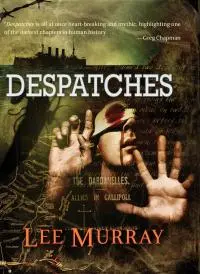 Debbie Cowens says Kāpiti Island, near where she lives, has always appealed to her as a great setting for a horror story: “It’s steeped in myth and history from its full name Te Kāpiti Waewae (legs spread apart) coming from Kupe splitting Aotearoa into the North and South Island by standing on the ground and pushing his feet apart, to its time as a whaling village in the early nineteenth century, to the Battle of Waiorua where Te Rauparaha (rangitira/chief of Ngāti toa and creator of the famous Ka Mate haka) fought and killed attackers at night. While the island is a beautiful nature and bird sanctuary now, it still feels like there’s something eerie and dangerous lurking beneath the lush bush and wildlife.”
Debbie Cowens says Kāpiti Island, near where she lives, has always appealed to her as a great setting for a horror story: “It’s steeped in myth and history from its full name Te Kāpiti Waewae (legs spread apart) coming from Kupe splitting Aotearoa into the North and South Island by standing on the ground and pushing his feet apart, to its time as a whaling village in the early nineteenth century, to the Battle of Waiorua where Te Rauparaha (rangitira/chief of Ngāti toa and creator of the famous Ka Mate haka) fought and killed attackers at night. While the island is a beautiful nature and bird sanctuary now, it still feels like there’s something eerie and dangerous lurking beneath the lush bush and wildlife.”
Kathryn Burnett suggests a horror based around the Minnie Dean Murders. For those who don’t know, the Winton woman, a baby farmer, was executed in 1895 for the murder of several infants in her care, the only New Zealand woman to have gone to the gallows. Urban legend has it that her crimes were so heinous, no plants will grow on her grave!
Tracie McBride, author of short story “Her Ghosts,” says “the eruption of Mount Tarawera in 1886 is the first [thing] that springs to mind. The ghostly apparitions said to have preceded it and the devastation that followed makes it ripe for the retelling.” Too late for Tracie though, as I have already written that story, with a novella in my own Taine McKenna horror-adventure series which explores the loss of the Pink and White Terraces in that devastating eruption. Into the Clouded Sky appears in my Bram Stoker-Award-winning collection Grotesque: Monster Stories.
That segues nicely with my next question. What new writing do you have coming?
My comic horror novella, Despatches, releases in September from Absinthe Books / PS Publishing UK. While not set here at home, the story qualifies as Kiwi fiction too, since it embodies the character of our New Zealand Expeditionary Force at Anzac Cove in WWI, a significant moment in our country’s history, with the formation of the famous Māori Battalion, who sacrificed so much, yet gained immeasurable mana (respect) at Chunuk Bair. Here is the story blurb:
Daily Star war correspondent Cassius Smyth is off the Dardanelles to report on the Allied campaign. That is, if only the War Office will let him tell the truth. But after months in the trenches at Anzac Cove, Smythe learns that it isn't just the Ottoman who wish to claim back the land, and the truth is as slippery as a serpent . . .
So as you can imagine, with two Kiwi-flavored titles coming withing two weeks of one another, it’s been an exciting month! I hope readers will dive in and discover for themselves what makes our Kiwi horror unique.
Despatches releases 15 September 2023 from Absinthe Books
Remains to be Told: Dark Tales of Aotearoa releases 1 October 2023 from Clan Destine Press, Australia. The work includes a foreword by six-time Bram Stoker Award®-winning author, Lisa Morton, iconic short story “Coming Home in the Dark” by Owen Marshall (the subject of acclaimed feature film by James Ashcroft), and Lee’s own Bram Stoker Award®-nominated story “Dead End Town”. Produced with the kind support of Creative New Zealand.
Get Remains to be Told at Bookshop or Amazon
Reference:
- Lieut.-Col. Gudgeon (1906). The tipua-kura, and other manifestations of the spirit world. The Journal of the Polynesian Society, Volume 15, No. 1, pp. 27-57
- Horror author Lee Murray is NZ's Stephen King
- Body Horror GRAFTED Currently Shooting In New Zealand
- FEM-FOCUSSED BODY-HORROR PIC GRAFTED LENSING IN NZ
- Lee Murray Author Website

About the author
Lindy Ryan is an award-winning author/editor, short film director, and professor. She is the founder of Black Spot Books, a small press with a mission to amplify voices of women-in-horror. Ryan previously served on the Board of Directors for IBPA, and is currently co-chair of the Horror Writers Association Publishers Council. She is an active member of the HWA and ITW, and was named one of Publishers Weekly's Star Watch Honorees 2020.
